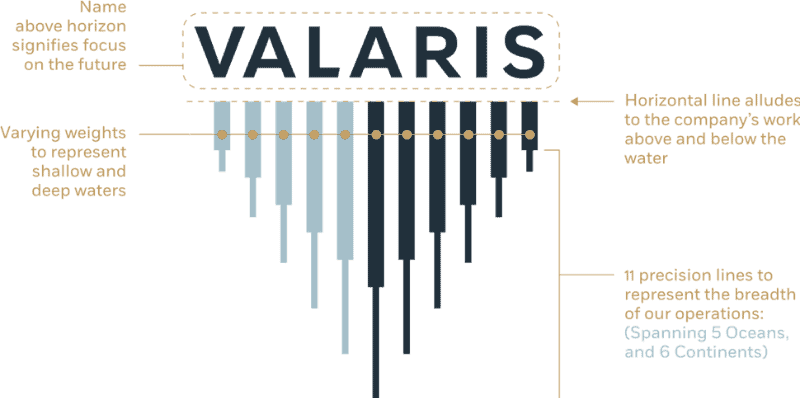Embarking on a New Brand Name…and Navigating the Journey Successfully: Part 1

“Level with us…do we really need to change our company’s name?”
At Monigle, it’s a question we’re asked all of the time, and for good reason. Nothing strikes fear into the hearts, minds, and bottom lines of C-Suite leadership quite like a name change. The decision is loaded with political minefields, emotional barriers, and huge cost implications. Think about it: business strategies may flex, offerings may expand, brand experiences may evolve. But a company’s name? That’s supposed to stay written in stone.
Not anymore. In fact, dozens of companies listed on the S&P 500 change their corporate names each year. But why? Why take that risk? Why mess with the ultimate identifier of your brand’s DNA?
While the reasons may vary, one thing’s for sure: the decisions weren’t made lightly. Let’s explore the top 5 reasons why companies embark on a renaming journey. Because while the pitfalls are plenty, when guided by sound logic and a clear direction—with a dash of intestinal fortitude thrown in for good measure—the rewards can be nothing short of epic.

Reason #1: Mergers and acquisitions
By far the most common reason brands today change their names. When two organizations come together, the question of name is typically top of mind, politically driven—and almost always—emotionally charged. In choosing the right path forward, leadership must consider:
• Uniting under one of the existing names
• Creating a mashup of the existing names
• Keeping both names, but creating a new umbrella name
• Migrating one of the existing names to the products/services level
• Creating a new-to-world name
For example, when United Technologies merged with Raytheon Company, the decision was made to name this “merger of equals” Raytheon Technologies. While Raytheon is the primary brand, they smartly incorporated the descriptor “Technologies” and United Technologies’ logo/symbol to recognize the proud legacy of their partner.
On the other end of the spectrum, we find a recent Monigle engagement centered on the merger of two of the world’s largest offshore drilling companies, Rowen and Ensco (Ensco Rowan plc). After thoughtful analysis, the management team made the bold decision to explore a whole new name for the combined entity—one that would send a clear signal to their thousands of employees around the globe that, going forward, they would be one unified company.
Monigle guided the team through a rigorous cultural alignment process—one that encouraged input and feedback from employees and customers alike. This was a critical step to the ultimate success of a new name, since employees felt a sense of ownership, and pride that their voices were both heard and valued.
Ultimately, the company selected Valaris as their new, combined name. Valaris was inspired by the Latin root meaning strength, courage, and signifying something of value. This name embodied the company’s ambition to be “Boldy First” as the leader in their industry. More than a year after the merger and rebrand, Valaris—the name and the united company—continue to thrive.

Learn More: Read the Valaris Case Study
There are also situations when it makes smart business sense to keep high equity brand names, but under a new unifying umbrella moniker. For example, when two highly respected health care systems in South Carolina came together as one organization, they chose Prisma Health as their overall system name while maintaining the names of their 13 individual hospitals. Brand unity was created by adopting a masterbrand strategy that links each hospital with Prisma Health and a common visual expression.
Learn More: M&A Series Part 2/11: Choosing the Right Name During an M&A
Reason #2: Legal concerns
Put simply, your name is ruffling feathers in marketplace—or holding you back from growing beyond your core. Maybe it’s too close or confusingly similar to other brands—thus limiting your ability to expand either geographically or into new products and services without the fear of expensive, time-consuming litigation. Or maybe you’ve already received legal notice challenging the use of your name. Either way, it’s time to get the lawyers involved.
Be aware that often these notices are sent out by companies who are being aggressive about protecting their names, but they may have questionable legal grounds. A loud, intimidating bark is often used to scare away all but the most determined and the best informed. It’s common for multiple companies to coexist with the same or similar names without legal conflict, particularly when operating in different industry segments. That’s why we can fly on United Airlines, ship our furniture on United Van Lines, or get healthcare from United Healthcare.

Primarily, you want to be sure that your name does not confuse people about who is providing the goods or services. While issues around using the same name as another company (albeit in another industry) are complex, it’s even more so around a similar name. How similar is too similar? Is your name spelled differently, but it’s the phonetic equivalent of a registered name? Does it share a common root, but with a different prefix or suffix? Unpacking these nuances is what keeps trademark attorneys in business.
Where it gets tricky: you rarely receive a legal “all clear.” Instead, your lawyers typically offer advice around the:
• Extent of risk (i.e., more or less than a normal business risk)
• Likelihood that you would prevail if sued
• Chance that you could even get the name through an extensive registration process
In the end, the decision will be yours regarding how much risk you are willing to take. Just don’t count on ever getting a “risk-free” diagnosis from your legal experts. And, of course, part of the gut-check for you is determining how willing you are to fight the battle, if challenged–even if your chances of prevailing are over 90% (because some companies will absolutely invest formidable resources to eliminate potential source of dilution for their coveted names).
Reason #3: Marketing dilution
This one’s similar to legal concerns, but without the added stress of litigation. In this scenario, a company’s name is either:
• Too close to others in the marketplace, making it a major, if not impossible, challenge to invest the time and resources needed to build a distinctive brand
• Structurally deficient (long and unwieldy)
• Overly descriptive or generic
It’s a much tougher decision to make a change in these types of names because, oftentimes, you just don’t have the compelling, definitive catalyst of legal risks to focus everyone’s attention. Common or usual names—even initials—can feel as comfortable as an old pair of jeans long after they have ceased to be effective as a company or product name. Examples include geographic names, names that describe what you do, names that have been cobbled together through multiple mergers, initials, or popular/expected names that have been overused to the point that no one can exercise exclusivity.
Learn More: Five Signs it’s Time for a Rebrand
Names that are overly long, are similar to several others, or are just plain…plain, can cause serious dilution of every dollar you invest in marketing, communications, recruiting, SEO, and permanent media. This is because they lack the stickiness or memorability to carve out distinction amongst the crowds and the clutter.
For example, when IBM chose to go-forward with three simple letters from the alphabet, it was a vast improvement over International Business Machines, or even the company’s original name coined in 1911: Computing Tabulating Recording Corporation! You definitely can’t argue with the simplicity and power of 3M over its original name, Minnesota Mining and Manufacturing. And, the ubiquitous Nike brand would have a much harder time motivating fitness enthusiasts to “Just Do It” had they stuck with their original name, Blue Ribbon Sports.
Reason #4: Negative baggage
Stuff happens. Sometimes it’s your doing. Sometimes it’s just bad timing or even tectonic shifts in societal norms. Sometimes it’s an unfair perception that you simply can’t shake. And, unfortunately, sometimes it’s a disaster. Either way, your name instantly becomes a red flag. So what do you do? Invest time and resources into changing perceptions or make a clean break? Of course, both options should be grounded in the assumption that corrective actions have been taken, which means you have an authentic, positive story to tell rather than using a name to band-aid over the negatives.

For example, following a tragic crash in 1996, ValuJet Airlines changed its name to AirTran Airways, which was the name of a smaller airline that they had recently acquired. While controversial, this and other changes empowered the company with the clean break they needed to distance itself from this horrific accident.
More recently, Comcast adopted Xfinity as its product name largely to send the signal that they are not the same old company that had developed a well-deserved reputation for poor customer service. This decision allowed them to keep Comcast as the corporate name, while signaling a bold path forward for new customer-centric technologies at the product level.
And finally, numerous credit unions across the country have changed their names and brands to:
• Send a signal of broad accessibility rather than the perception that they are limited to a relatively small, finite section of the population in their regions
• Overcome the perception of limited services and lack of sophistication relative to technology and innovation.
In 2018, Monigle partnered with Public Service Credit Union (PSCU) to rebrand the company under the new Canvas Credit Union name. This decision better reflects the organization’s strategic vision of providing customers with an unexpected breadth of services for all stages of their lives—but with a personalized, human touch. “We see each of our members futures as a blank canvas, a unique possibility waiting to be painted,” said President and CEO, Todd Marksberry. The new name inspired Canvas to restructure every aspect of their customer experience—and even how they recruit new employees.
Learn More About the Rebrand: Monigle in the News: In the Room w/ Todd Marksberry Podcast
Reason #5: Strategic fit
Every company evolves and adapts. What was once a relatively straightforward hardware manufacturer may now be a leading provider of cloud-based, artificial intelligence solutions. If your legacy name is so rooted in the past that it can no longer stretch to represent the future direction—or if it lacks the spark of imagination and energy employees, customers, and other stakeholders need to buy in—it’s time to move on.
Take Google. By renaming the parent company Alphabet—while positioning its ubiquitous search and productivity solutions name as a subsidiary—Google focused its consumer-facing brand where its most relevant. Meanwhile, the corporate entity, moving forward with a separate name, has greater flexibility to expand into other domains while creating an org structure that allows other leaders to emerge and business results reported separately.
So, now what? In this article we’ve defined and explored the top 5 reasons why companies embark on a renaming journey, whether that be a merger or acquisition, legal concerns, marketing dilution, negative baggage, or leaving behind a legacy name that’s rooted in the past. In Part 2 of this series we outline the next path forward when renaming your brand – what to expect, audiences to include, watch-outs, considerations and more!



